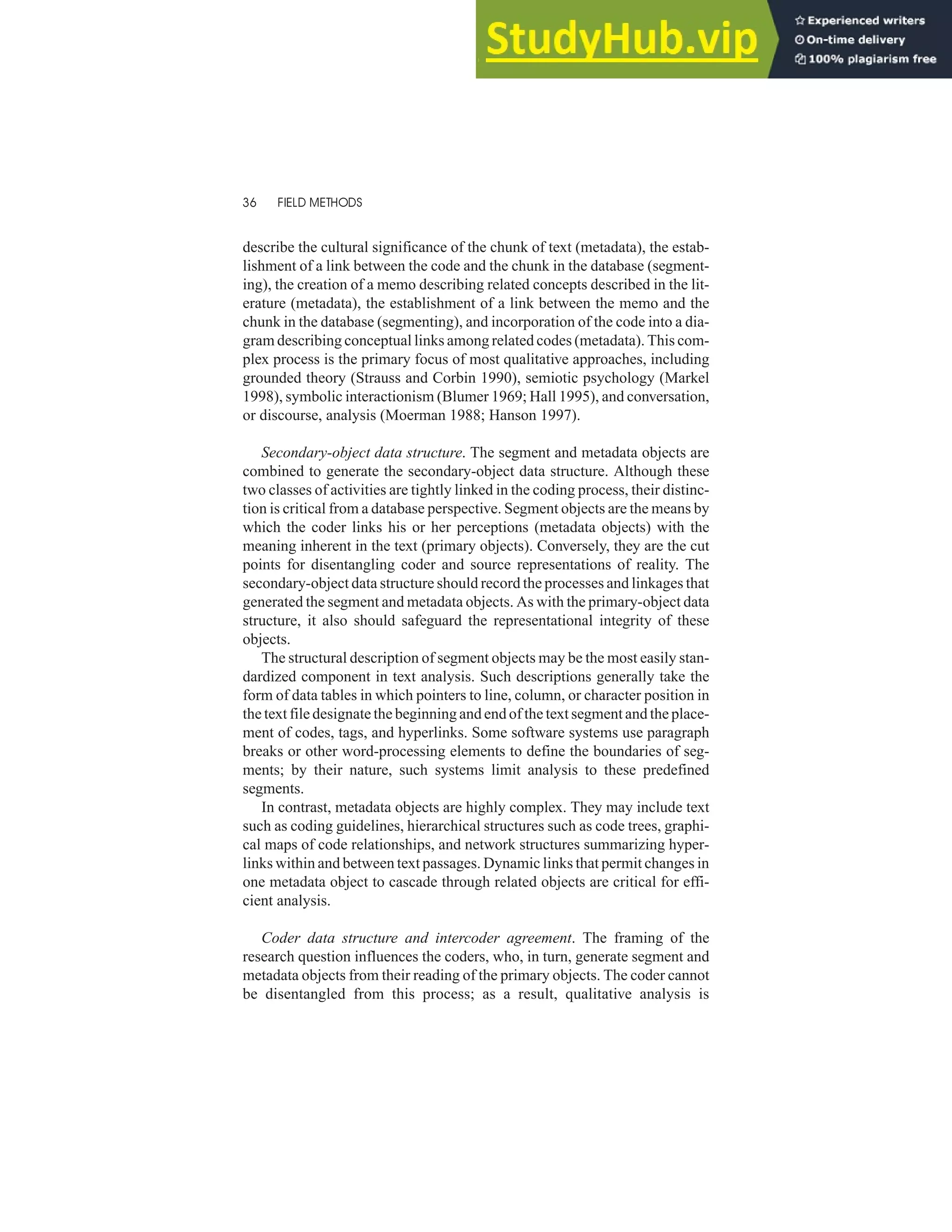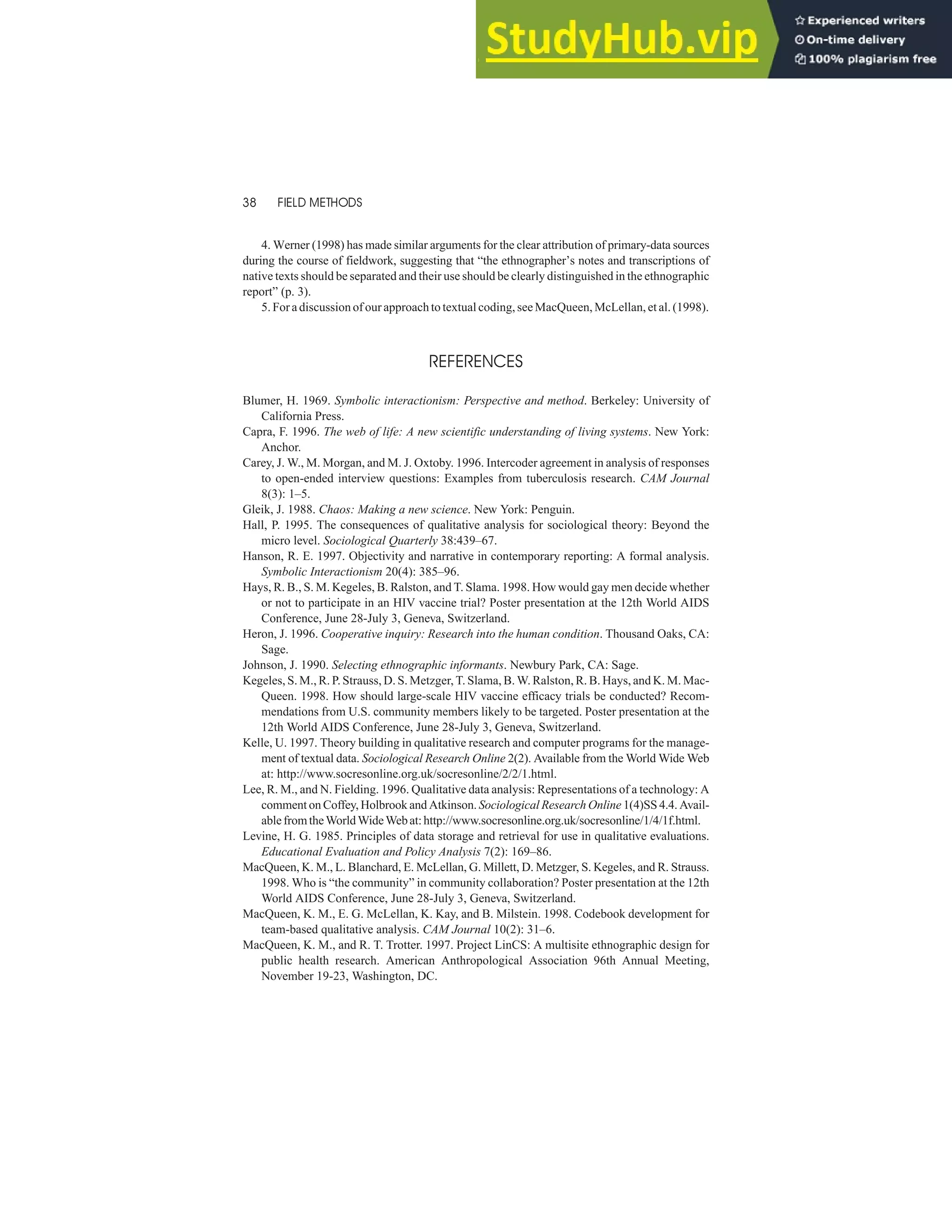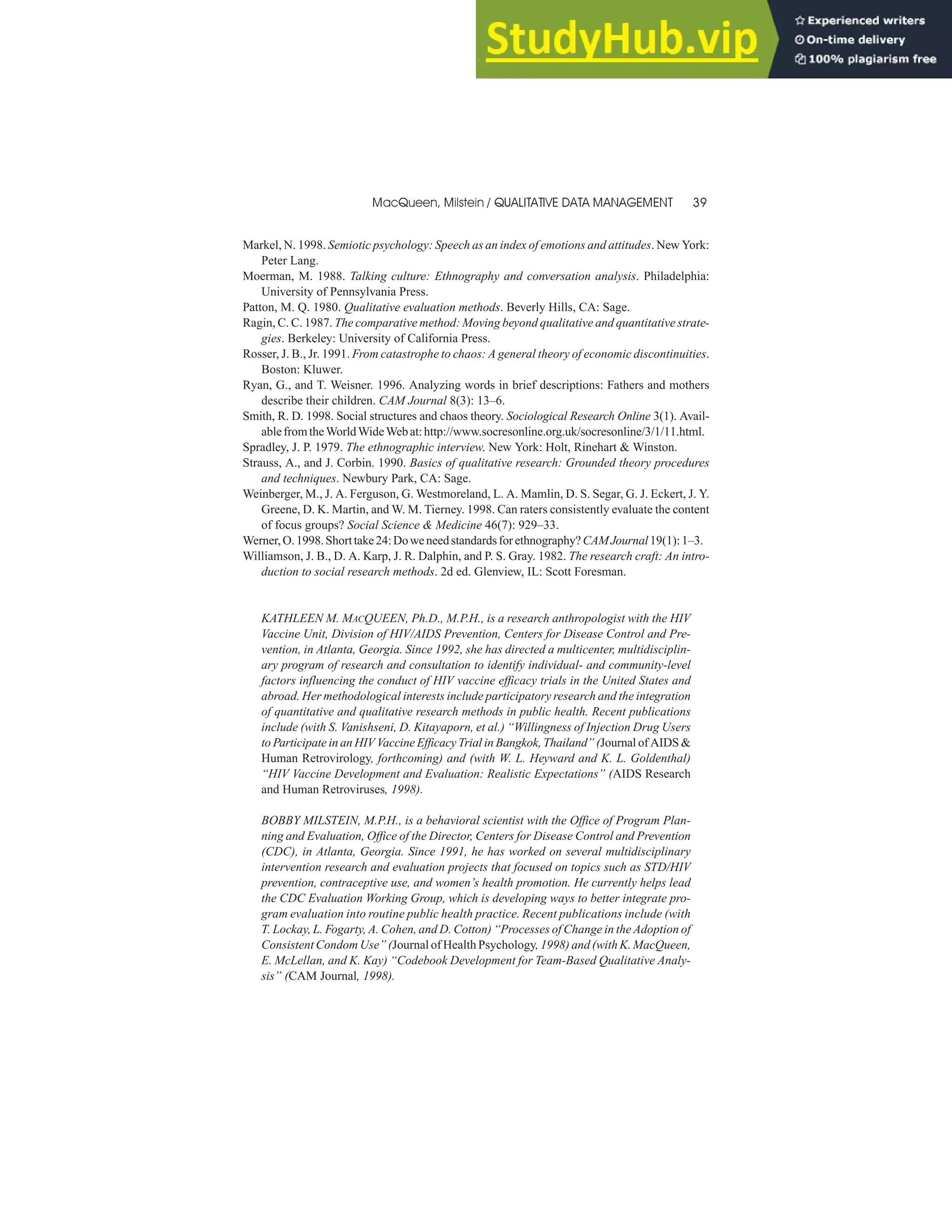This article proposes a systematic approach to qualitative data management centered around a database with four main elements: (1) characteristics of data sources, (2) primary data collected from sources, (3) secondary data generated to assist interpretation, and (4) characteristics of coders. The approach tracks the analysis process from framing a research question to developing an empirical answer. It emphasizes distinguishing different types of data, tracking relationships between elements, and supporting reliability assessments to facilitate efficient and valid analysis.
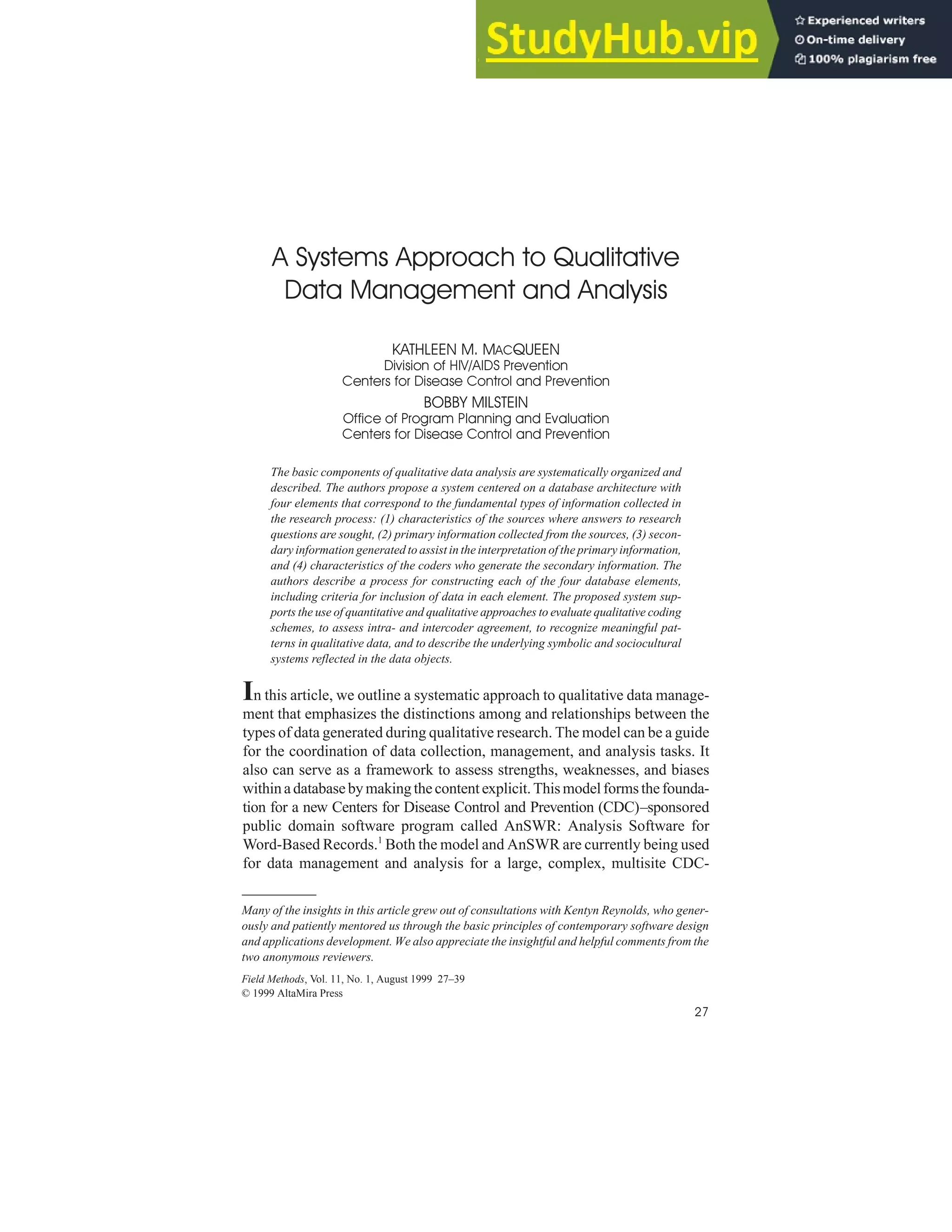
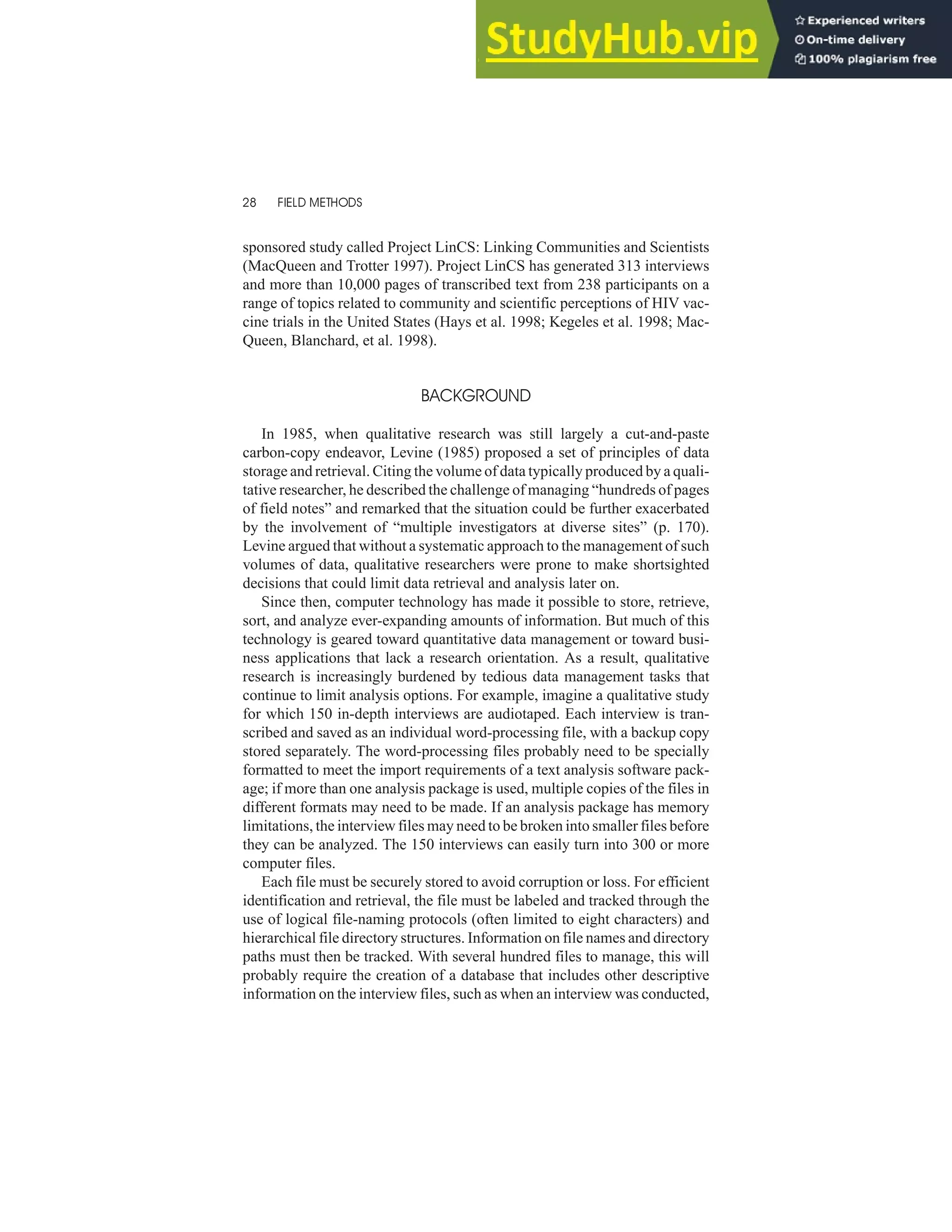
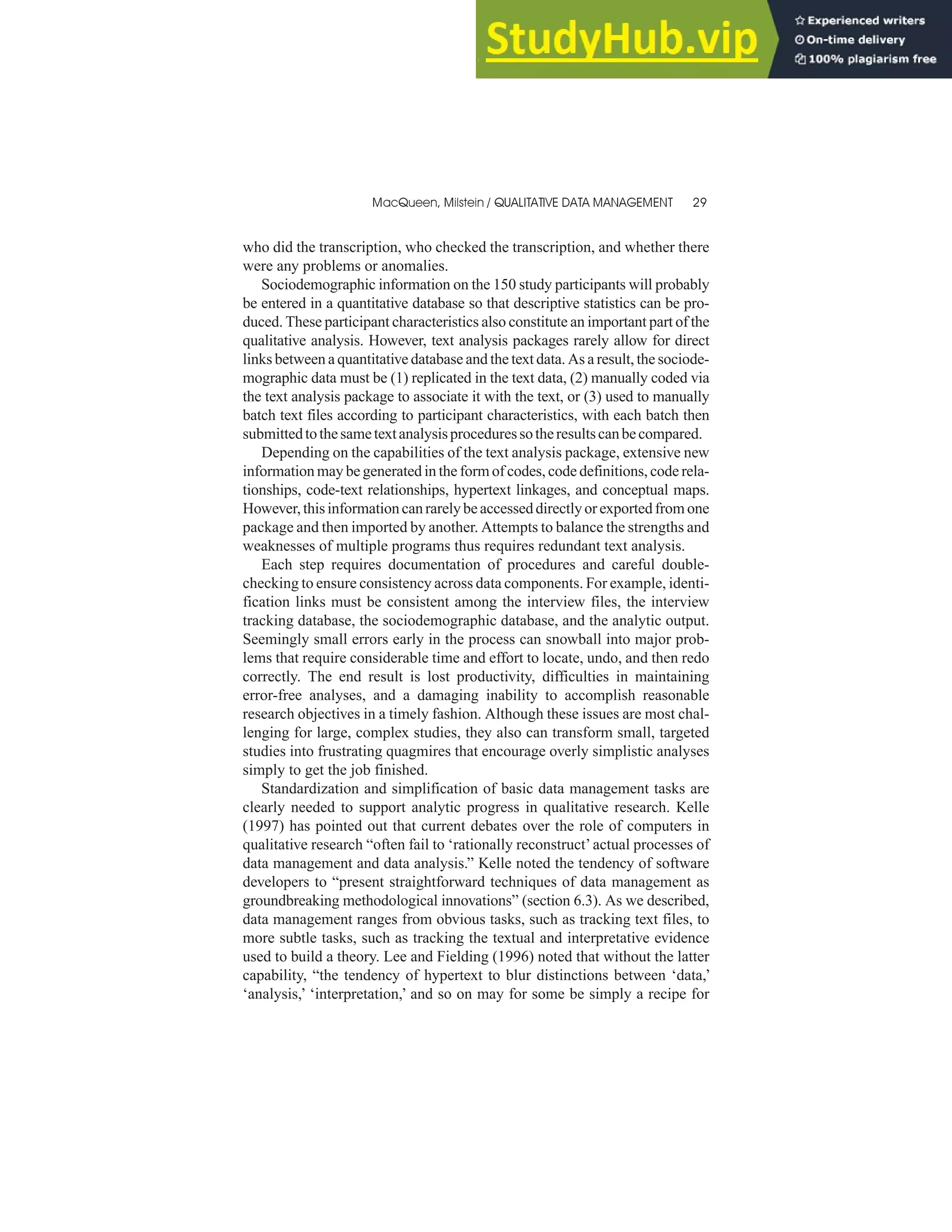
![confusion and indecision produced by a maze of links and connections going
nowhere in particular.” The importance of trying to distinguish what you
observe and what you think about what is observed also was recognized by
Spradley (1979), who warned against “the temptation . . . to create order out
of other cultures by imposing your own categories” (pp. 102–103) and
labeled such efforts shallow domain analysis.
Data management is a black box in virtually all qualitative software, hid-
den from view and difficult to access. Programs differ in the specific elements
in the underlying database (the design), the way these elements are config-
ured (the architecture), the mechanics of how the user works with the data-
base on-screen (the graphical user interface [GUI]), and the extent to which
the database elements can be separated from the software program with their
linkages intact (the export capability). By focusing on the data elements that
are commonly found in a wide range of qualitative approaches, we hope to
encourage the development of common protocols for importing and export-
ing data between software programs. With a common foundation, qualitative
researchers could work with multiple programs without penalty. To this mun-
dane yet critical end, we propose a systems approach centered on a database
whose elements correspond to the fundamental types of information associ-
ated with qualitative research and the processes driving the generation of that
information.
UNDERLYING PRINCIPLES
We emphasize an object-oriented definition of data. Data have tradition-
ally been viewed as numbers or text that symbolically describe the real world.
We preserve the emphasis on symbolism but expand it to include any digital
representation, including photographs, graphic displays, video, sound, text,
and numeric data. We refer to these representations as objects. All of these
data objects are, of course, artifacts created by people. Some of them are cre-
ated specifically to describe or explain other objects in the database (the who,
what, where, why, and how of the objects). A well-organized qualitative data-
base should make it easy for the analyst to know the particulars surrounding
each object within it. It should also support linkage among all of the objects at
all stages of analysis, and it should facilitate the development of analytic
techniques that emphasize the discovery of patterns and relationships among
whole objects, in addition to those that describe the basic components that
make up each object.
Our system is designed to support scientific inquiry. This means that it
supports systematic data collection and analysis, including the development
30 FIELD METHODS](https://image.slidesharecdn.com/asystemsapproachtoqualitativedatamanagementandanalysis-230805184859-562faa75/75/A-Systems-Approach-To-Qualitative-Data-Management-And-Analysis-4-2048.jpg)
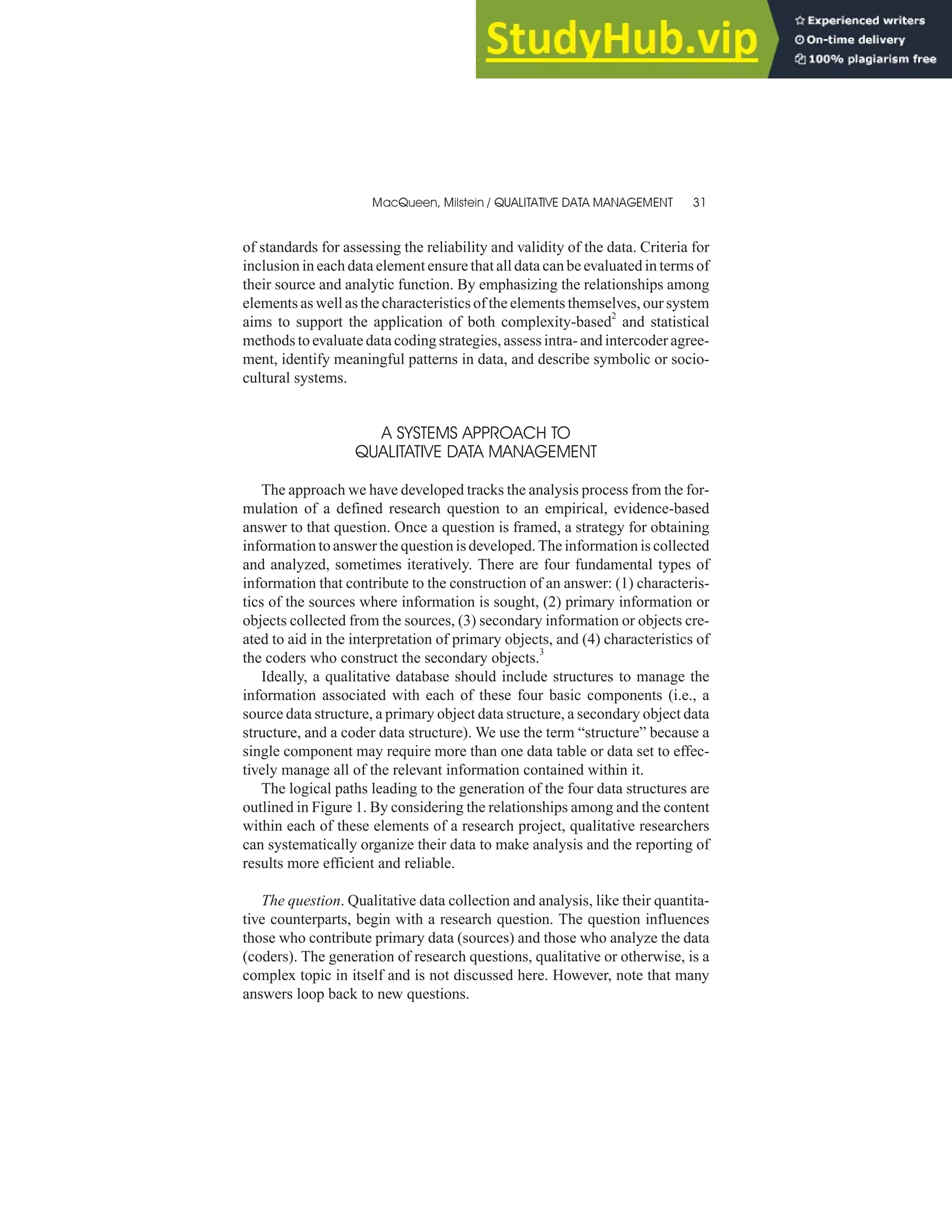
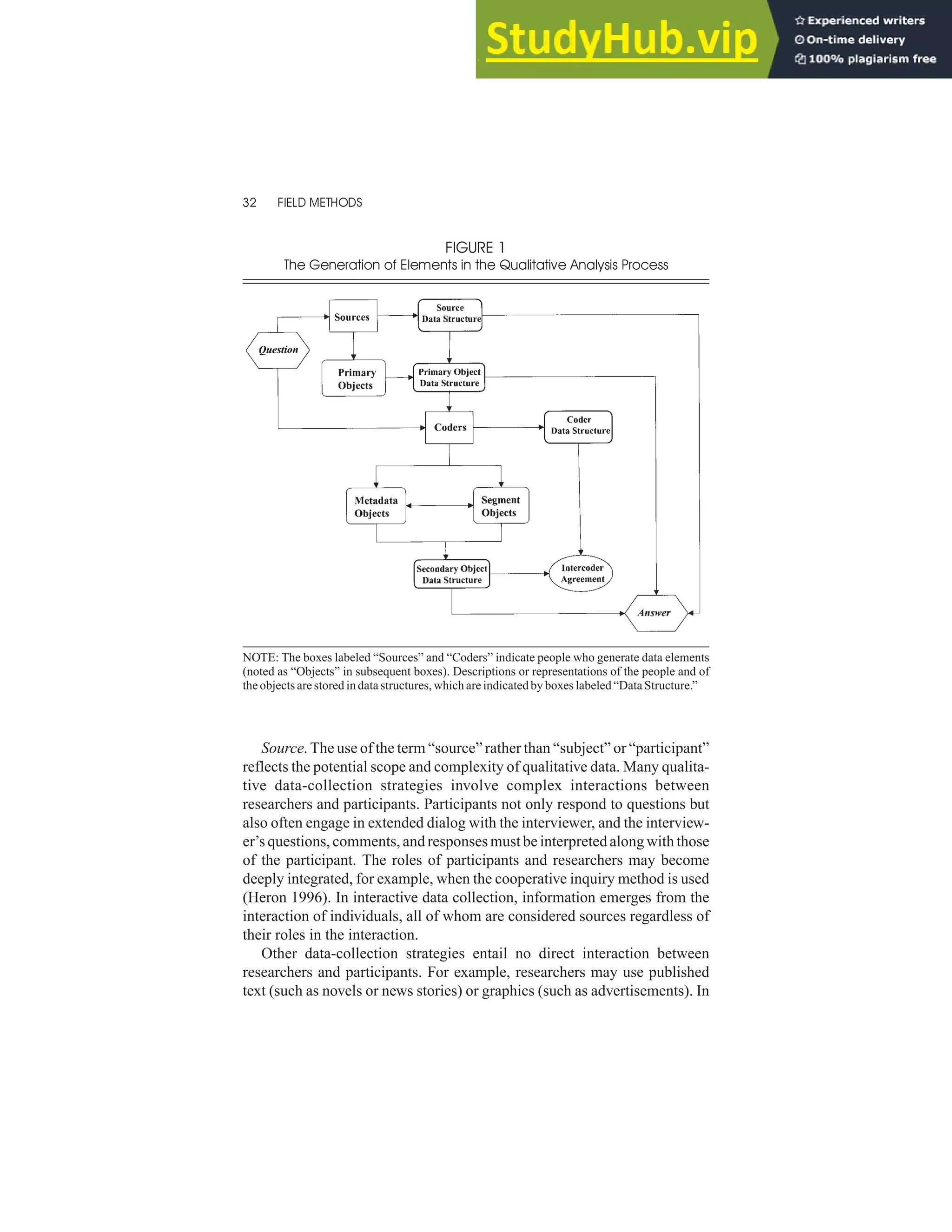
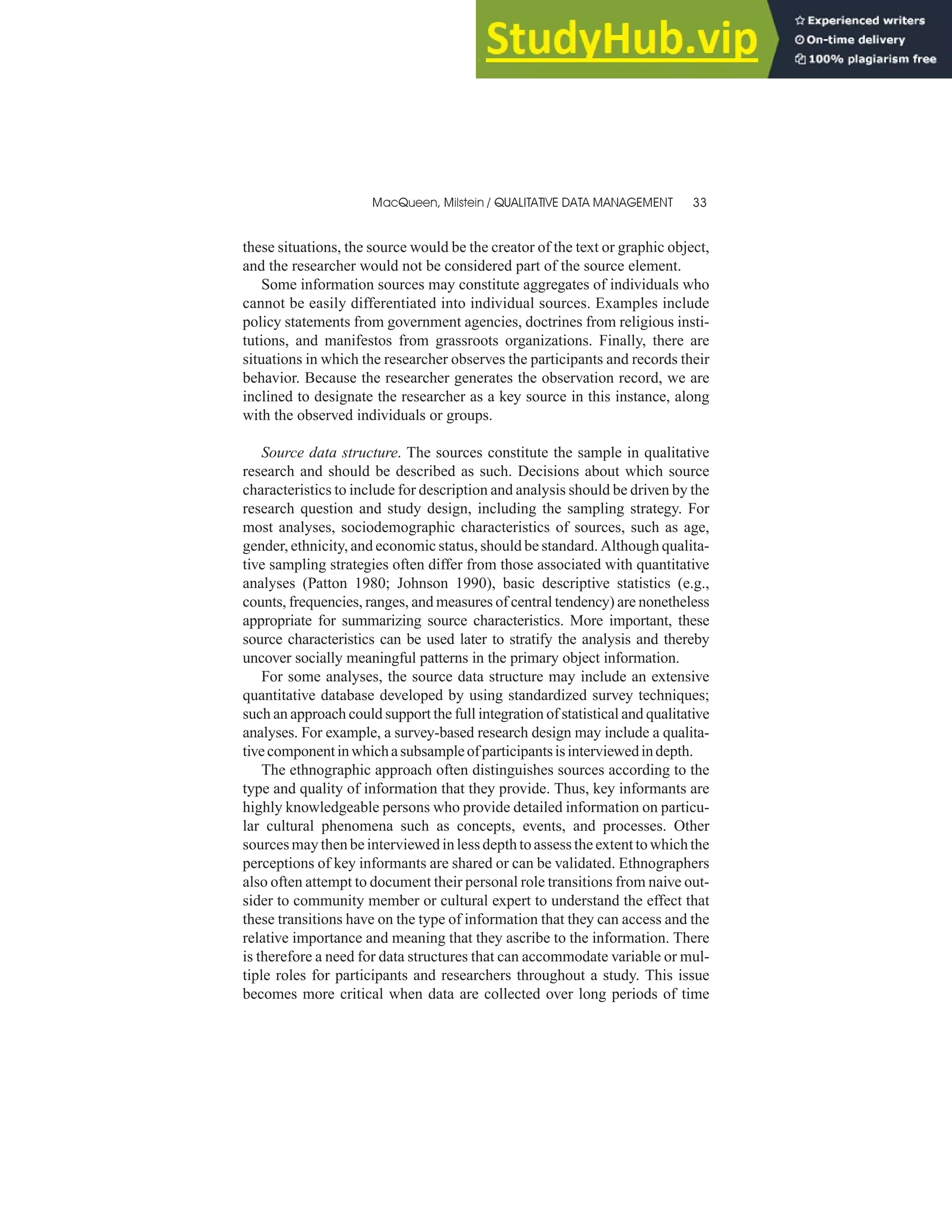
![(years or decades). Information accumulates in the source data structure,
whereas knowledge and experience accumulate among the persons who con-
stitute the sources. At a minimum, the passage of time should be evident in
the database.
Through object-oriented computer technology, it is possible to develop
source data structures that resemble dossiers and include items such as photo-
graphs, genealogies, resumes, or musical recordings. Although it may be fea-
sible to include such objects, methods for searching, linking, and classifying
the objects are needed if they are to serve an analytic purpose.
Primary object element. Sources generate the primary objects. When data
are collected through interviews, primary objects may take the form of audio
recordings, verbatim transcripts, verbatim excerpts, or interview notes.
Sources also may generate objects in the form of graphics, photographs, and
videotapes. In some situations, published ethnographic reports and archival
field notes may be analyzed along with newly collected interviews. We rec-
ommend placing all such items in the primary object element and then identi-
fying the author of the report, the ethnographer who recorded the field notes,
and the interview participants as the sources for their respective objects.4
Each item represents primary data sources in that each represents “tangible
materials that provide a description of a historical event [or, in the ethno-
graphic case, a historical context] and were produced shortly after the event
took place [or the context was observed]” (Williamson et al. 1982:243). In
general, a primary object exists as a result of the data collection process and is
independent of the analysis process.
Primary-object data structure. A primary-object data structure can serve
several functions, but its principle one should be to preserve the integrity of
the digital representation of the primary objects. For text, this does not mean
simply preserving a text file but an unchanging pattern of characters on the
page. There are two reasons for emphasizing file format integrity. The first is
related to scientific integrity: The text represents the core of the raw data;
once the data have been cleaned and readied for analysis, they should be sta-
ble entities that are protected from further manipulation. The second reason
has to do with the way that new elements are generated from the text element.
As described later in this article, these generative elements are literally
mapped to a specific electronic representation of the text by most qualitative
software programs. If that representation is modified, the elements must be
regenerated. The concept of file format integrity can be generalized to non-
text objects as well. Indeed, this generalizability makes it possible to apply
many text-based analytic strategies to nontext objects.
34 FIELD METHODS](https://image.slidesharecdn.com/asystemsapproachtoqualitativedatamanagementandanalysis-230805184859-562faa75/75/A-Systems-Approach-To-Qualitative-Data-Management-And-Analysis-8-2048.jpg)

